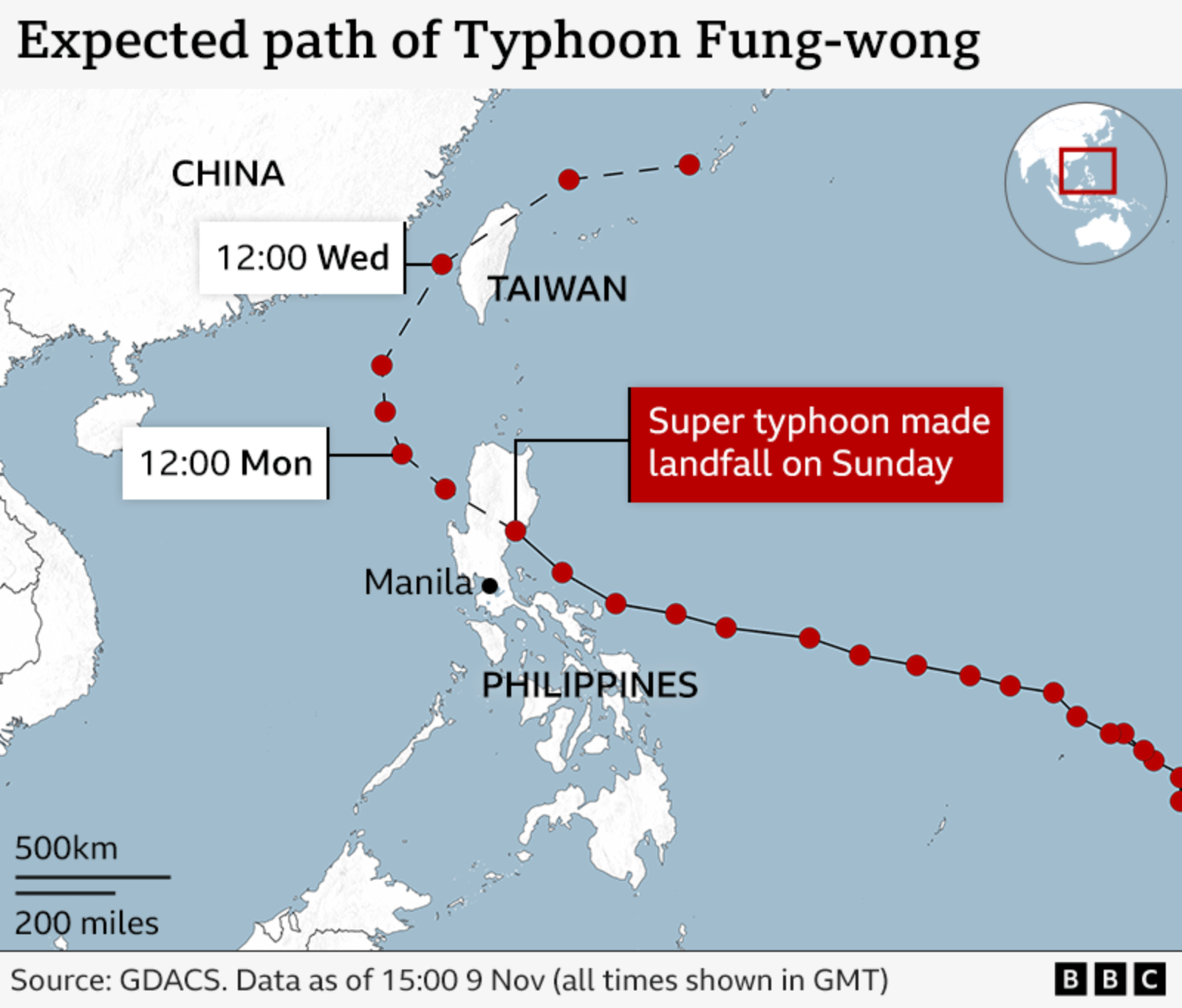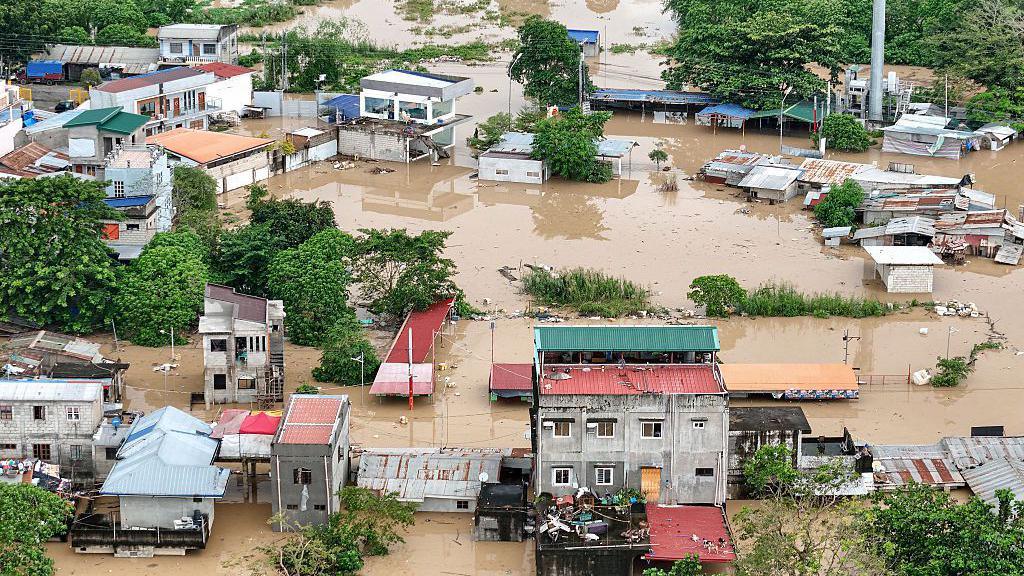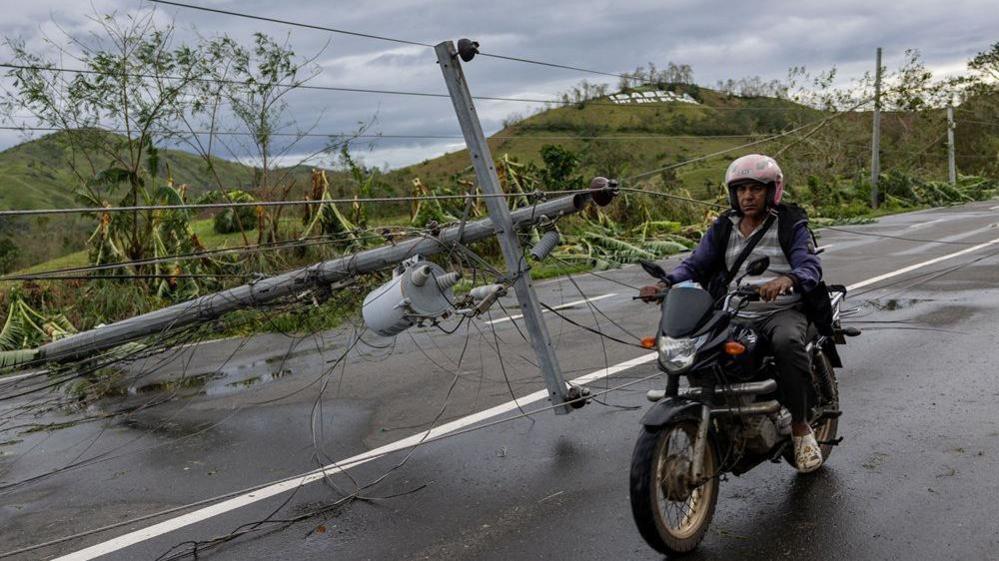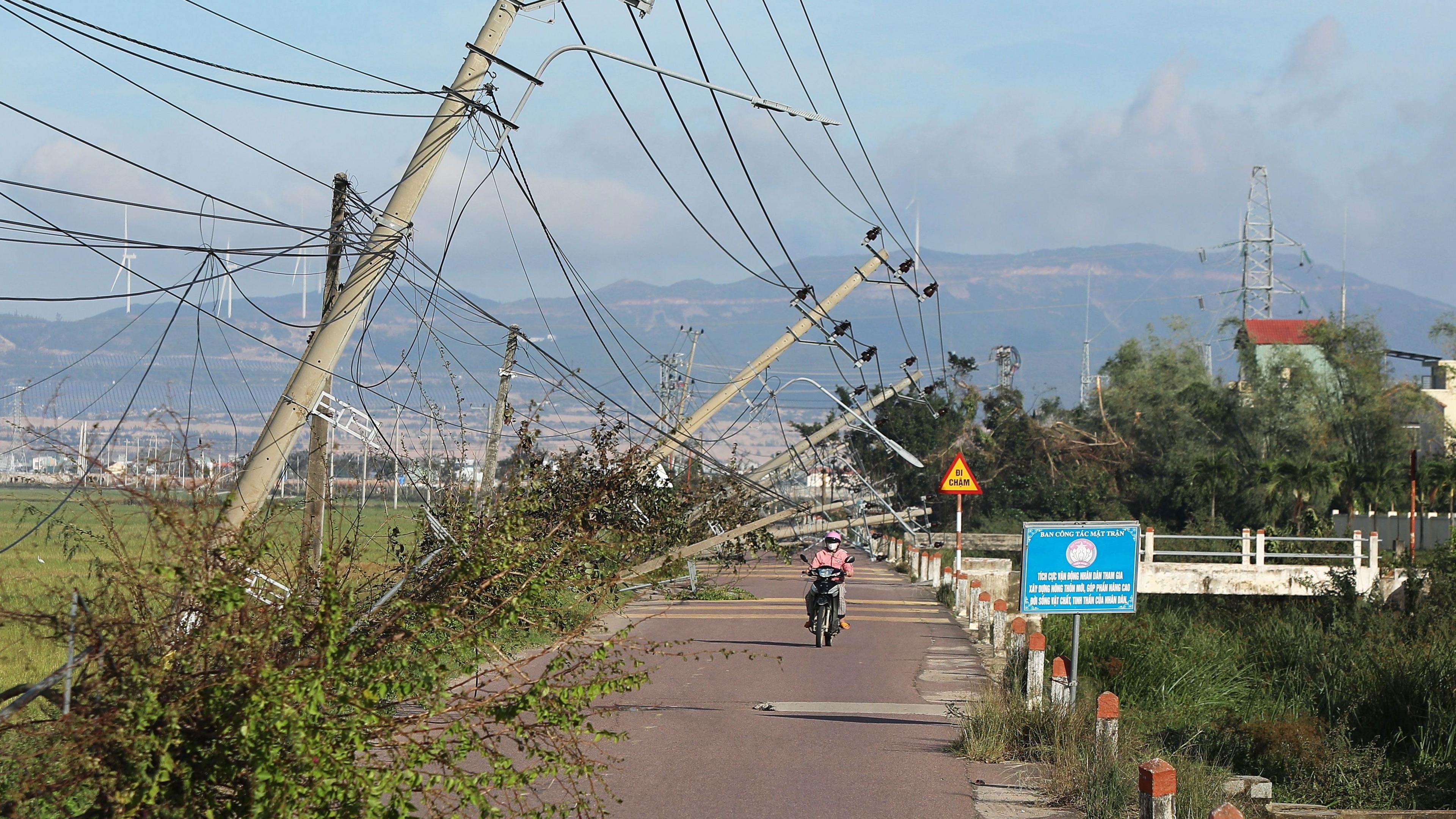Typhoon moves away from Philippines after killing two
Watch: BBC reports from Luzon Island in wake of Typhoon Fung-wong
- Published
A weakened Typhoon Fung-wong is now passing over the South China Sea and expected to head to Taiwan, after leaving two people dead in the Philippines.
Some 1.4 million in the Philippines had been preemptively evacuated before Fung-wong made landfall on Sunday as a super typhoon, carrying winds of 185km/h (115mph) and gusts of 230km/h (143mph).
It hit Aurora province in Luzon - the country's most populous island - at 21:10 local time (13:10 GMT) and weakened to a typhoon hours later.
Fung-wong comes days after earlier storm Kalmaegi left nearly 200 people dead. Philippine authorities are reporting less severe damage than expected - though a number of communities are still cut off by the floods.
By daybreak, the winds from Typhoon Fung-wong which had howled all night had died down, and people came out to see the damage.
There was plenty of damage to buildings, but good preparation appears to have prevented a repeat of the casualties seen after Kalmaegi hit the central Philippines last week.

The country's meteorological service had earlier warned of destructive winds and "high risk of life-threatening" storm surges from the "very intense" typhoon.
Hundreds of flights were cancelled, buildings were secured and residents in low-lying and coastal areas had been urged to move to higher ground.
At a shelter in central Aurora, parents brought young children, too young to remember Typhoon Haiyan, which killed more than 6,000 people when it struck the Philippines in 2013.
"We felt very worried because of the strength of the typhoon, and we have young children to think of," Jessa Zurbano had earlier told the BBC.
Another evacuee Patry Azul said: "Our house is made of wood and flimsy materials. We live close to the sea so we didn't feel safe."

Many neighbourhoods have been flooded and some are now isolated from the rest of the country
The winds Fung-wong brought were not as strong as in some previous storms, and its destructive power quickly weakened after it made landfall.
Two deaths were reported, according to the civil defence office: one person drowned, while another woman was found dead under debris in Catbalogan City. Two others were injured.
Still, many neighbourhoods have been flooded, and some are now isolated from the rest of the country after roads and bridges were cut by the high water levels.
Aurora officials told local media on Monday that four towns have been blocked.
Power is down in much of the main island of Luzon.

The Filipino government had declared a state of calamity across the country in preparation for Typhoon Fung-wong and in the wake of Kalmaegi.
This gives government agencies more power to access emergency funds and fast-track deliveries of essential goods and services.
Kalmaegi, one of the strongest typhoons this year, left at least 204 people dead in the Philippines, while more than 100 are missing.
Five people also died in Vietnam, where strong winds uprooted trees, tore off roofs, and smashed large windows.
The Philippines - located near the area where Pacific Ocean tropical weather systems form - is one of the most vulnerable countries in the world to cyclones.
About 20 tropical cyclones form in that region every year, half of which affect the country directly.
Climate change is not thought to increase the number of hurricanes, typhoons and cyclones worldwide.
However, warmer oceans coupled with a warmer atmosphere - fuelled by climate change - have the potential to make those that do form even more intense. That can potentially lead to higher wind speeds, heavier rainfall, and a greater risk of coastal flooding.
Are you in the Philippines? If so you can contact us here
Get in touch
Are you in the Philippines? If it is safe to do so share your experiences
Related topics
- Published3 days ago
